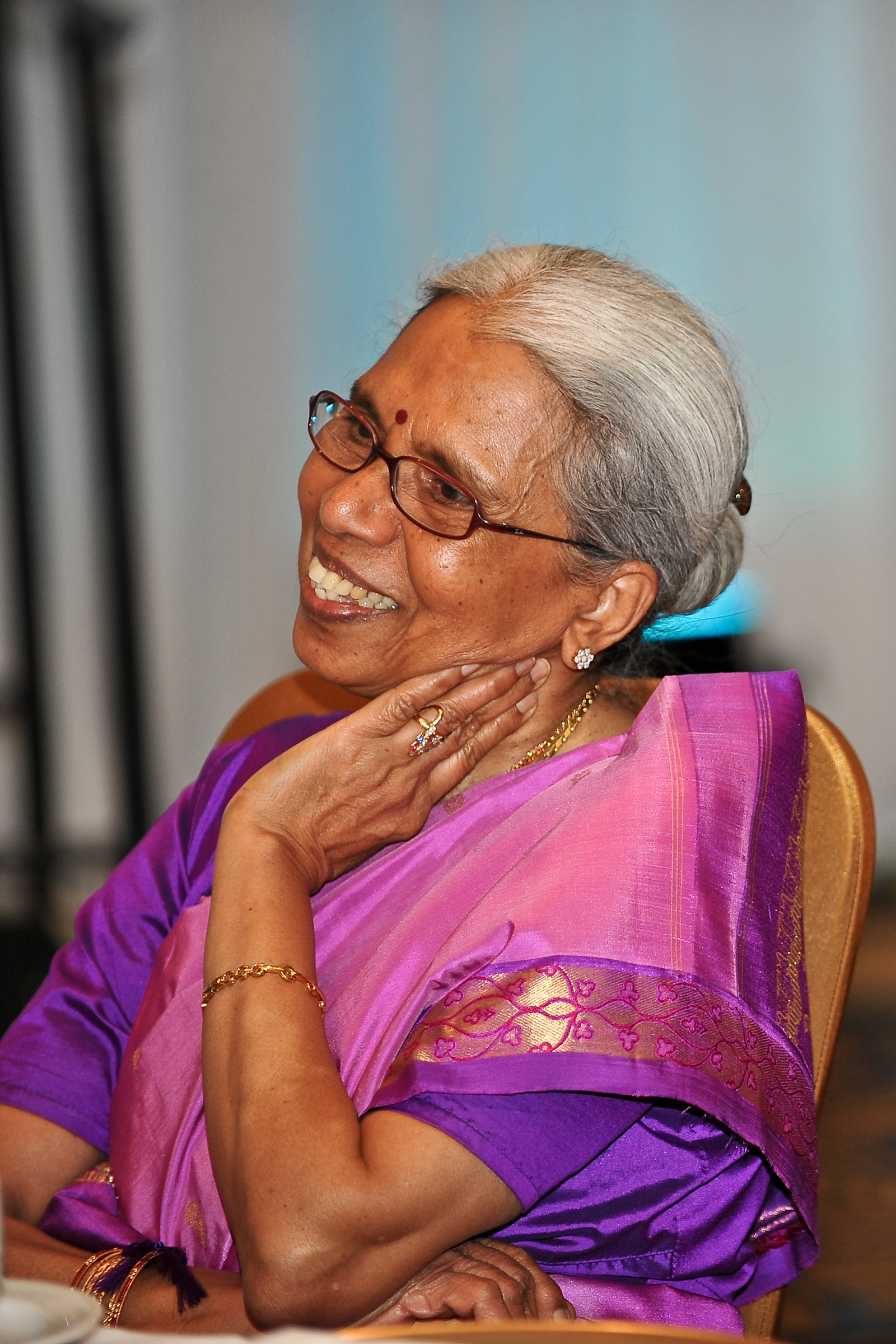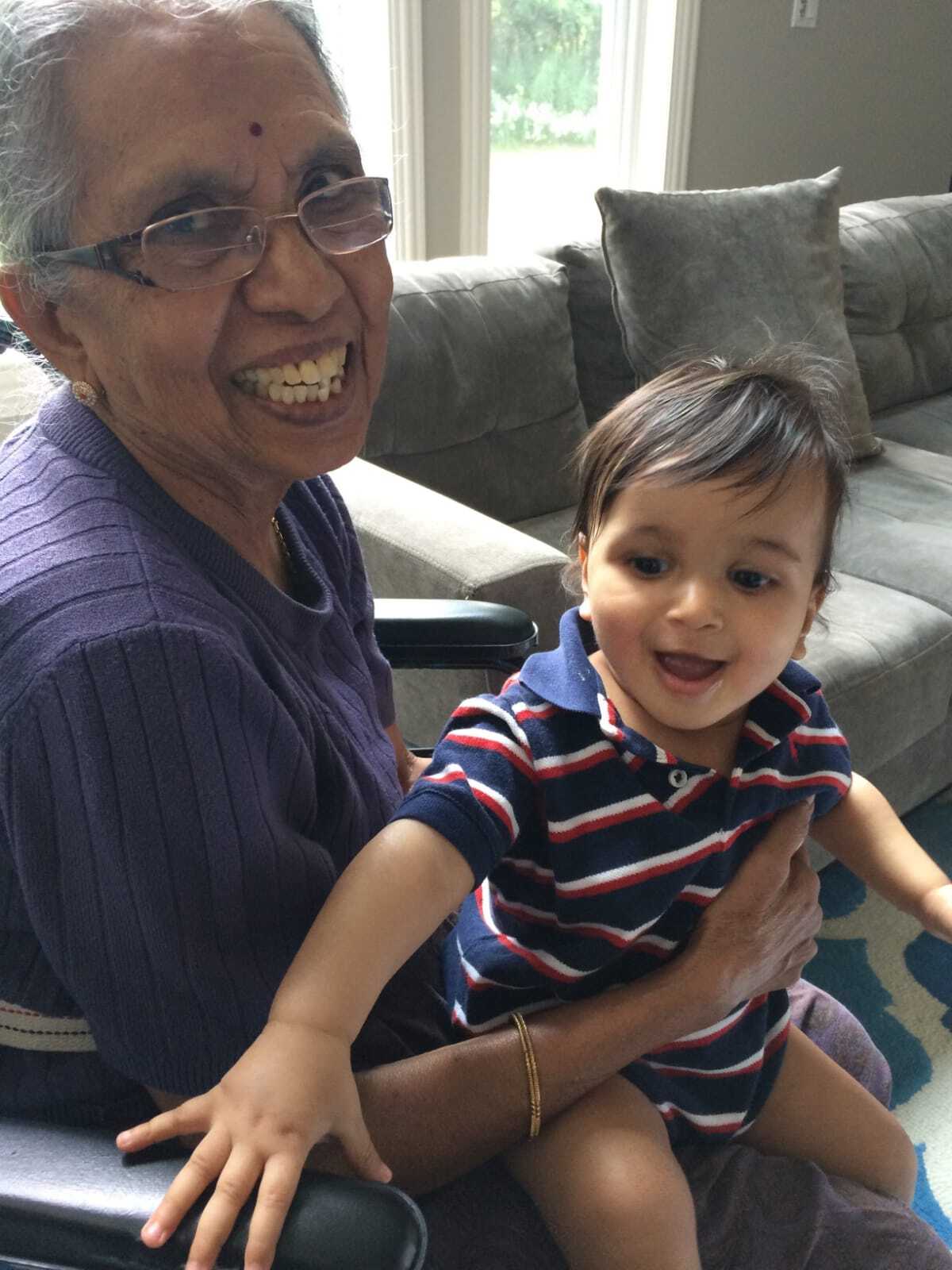Pankajam Nalluswami

The Pankajam Nalluswami Legacy Fund
“She was a pioneer,” her cousin remembers. Pankajam Nalluswami bravely showed up as the only girl in school and was the first woman in her family to attend college. She immigrated to the United States with young children, and in her new home raised a family, built a community, and pursued a second degree in computer science, all while maintaining a career and guiding her children, grandchildren, and countless family members and friends with her advice and wisdom throughout the years. She had a warm personality and never met a stranger. Her contagious smile allowed her to make friends wherever she went. She had three children, seven grandchildren, and three great-grandchildren who knew her love. Her love, discipline, education, humor, and courage would eventually be her foundation for managing her PSP diagnosis and care needs, while still partnering with her husband who became her primary caregiver during the first part of her illness.
In the 1940s in rural south India, it was almost unheard of for a young girl to go to school, yet, she was the only girl in her class through the 8th grade. She then aspired to get a degree in Physics and Astronomy, but her brothers worried that it would be impossible for her to get married if she was more educated than most of the men in her community. So instead, she pursued a degree in mathematics and became a school teacher. She charted the way for many who would follow her lead.
Pankajam was born in the village of Mattuvelampatti. After going to schools in nearby towns, she attended college in Trichy, India and earned a bachelor's degree, eventually becoming a mathematics teacher. She married Marappa Nalluswami in 1968 and moved to the United States for her husband’s higher studies. She later earned a second bachelor’s degree in computer science.Pankajam and her family lived in various places across the United States, from Colorado to Indiana, Illinois, and Michigan. They finally settled in the Maryland suburbs of Washington, DC where they would live for over two decades before retiring to sunny Florida.
Pankjam was diagnosed with PSP in 2013. She first experienced intermittent falls, then slowly became unable to walk, and finally was bed-bound and unable to feed herself. Despite her worsening condition, Pankajam tried to take care of herself for as long as she could. She had a family of willing carepartners who were always there for her, but they believe Pankajam’s independent spirit helped her live so long after showing her first signs of the disease.
“It went from walking to a walker to a wheelchair,” Pankajam’s son, Maran, said. “But she was so determined to not let this thing stop her that she would even roll the wheelchair up to the sink, prop herself up to do dishes, and then sit back down.”
PSP took Pankajam’s ability to easily walk or talk, and made her reliant on others for care. But nothing could take away her passion for life, her sense of humor, and the care she had for others. She knew the life stories of the nursing home attendants, took a keen interest in staying informed on current events, and somehow managed to always have a treat stashed away to share with visiting friends and family.
Maran and the rest of the family are starting this legacy fund because they know that no matter how independent the person is, these diseases require a network of support. And even though providing that support may be straining, Maran says that he wouldn’t have traded it for anything.
“It’s hard. We know it’s hard, but it is a privilege in life that I will always be proud of, and that gives me a great sense of peace, ,” Maran said. “Some of the last hands that touched my mom’s were her grandkids’, and I believe she was waiting for them to be in the room that day to say goodbye.”
As former carepartners, the Nalluswami family have a soft spot for those in that role today. Their legacy fund will support carepartners, bring increased awareness to these diseases, and promote research that will slow and one day cure the disease progression.
Join our email list
Get the latest news and resources
directly to your inbox.
Get the latest news and resources directly to your inbox.
Sign Up



